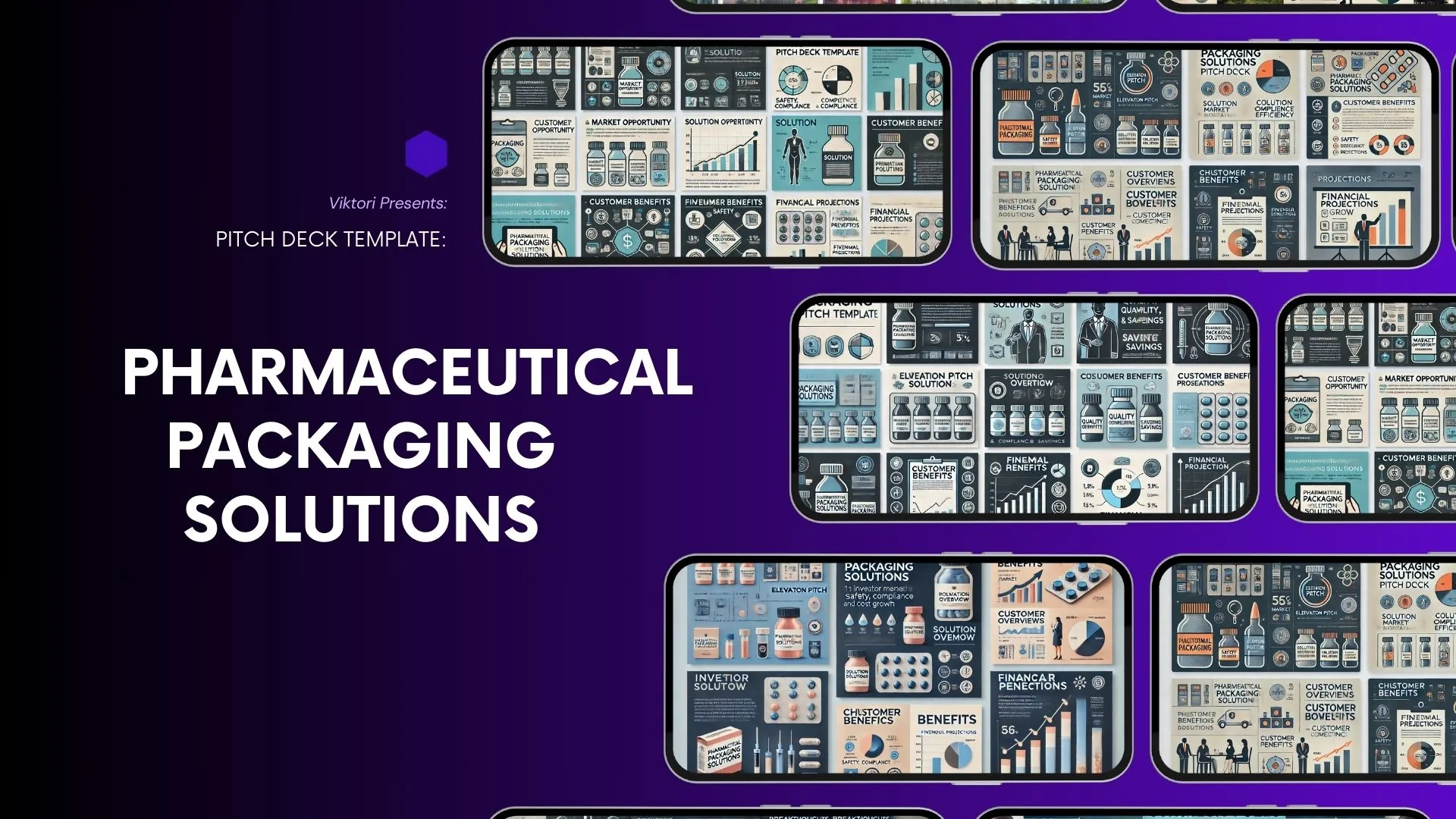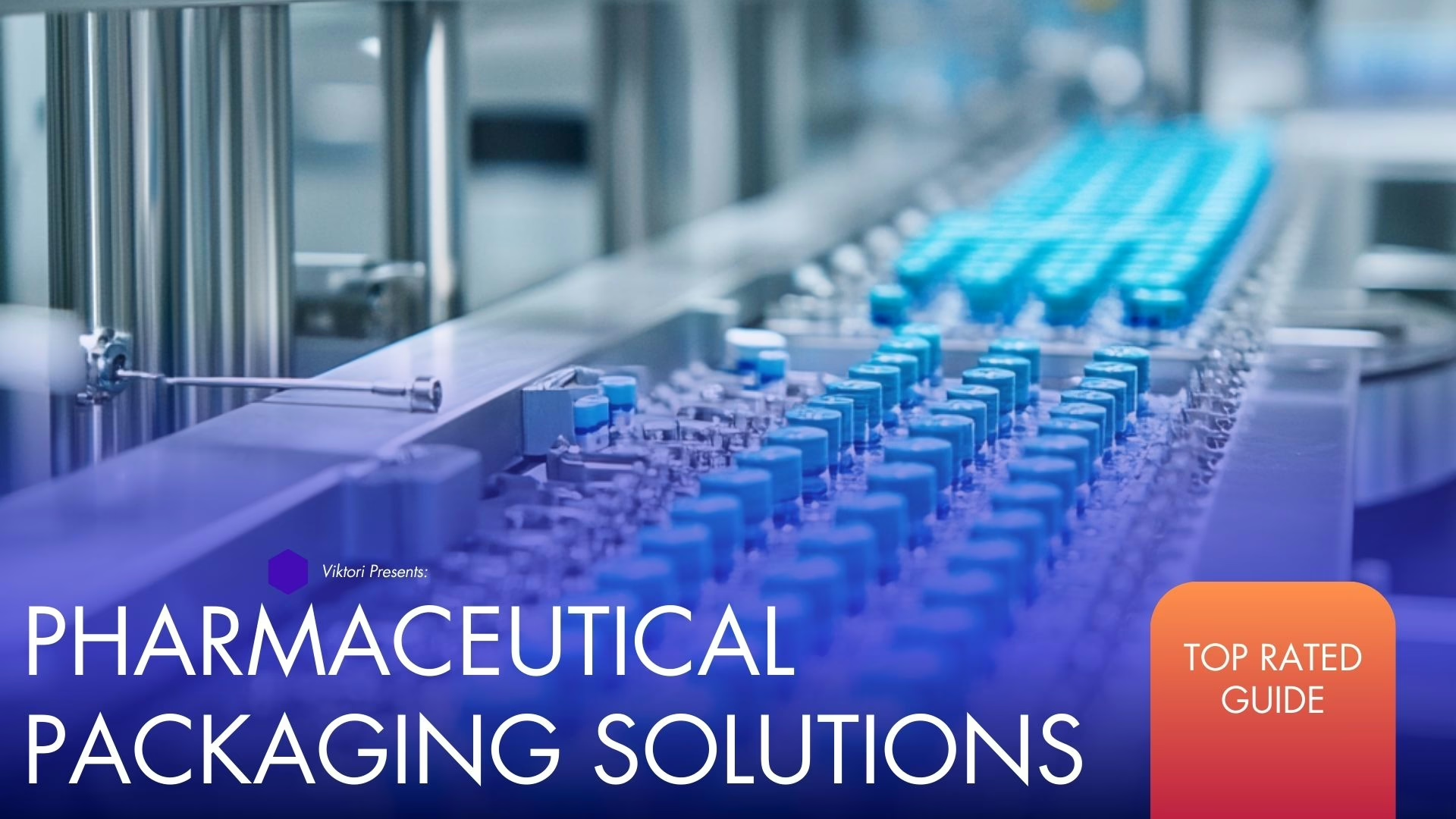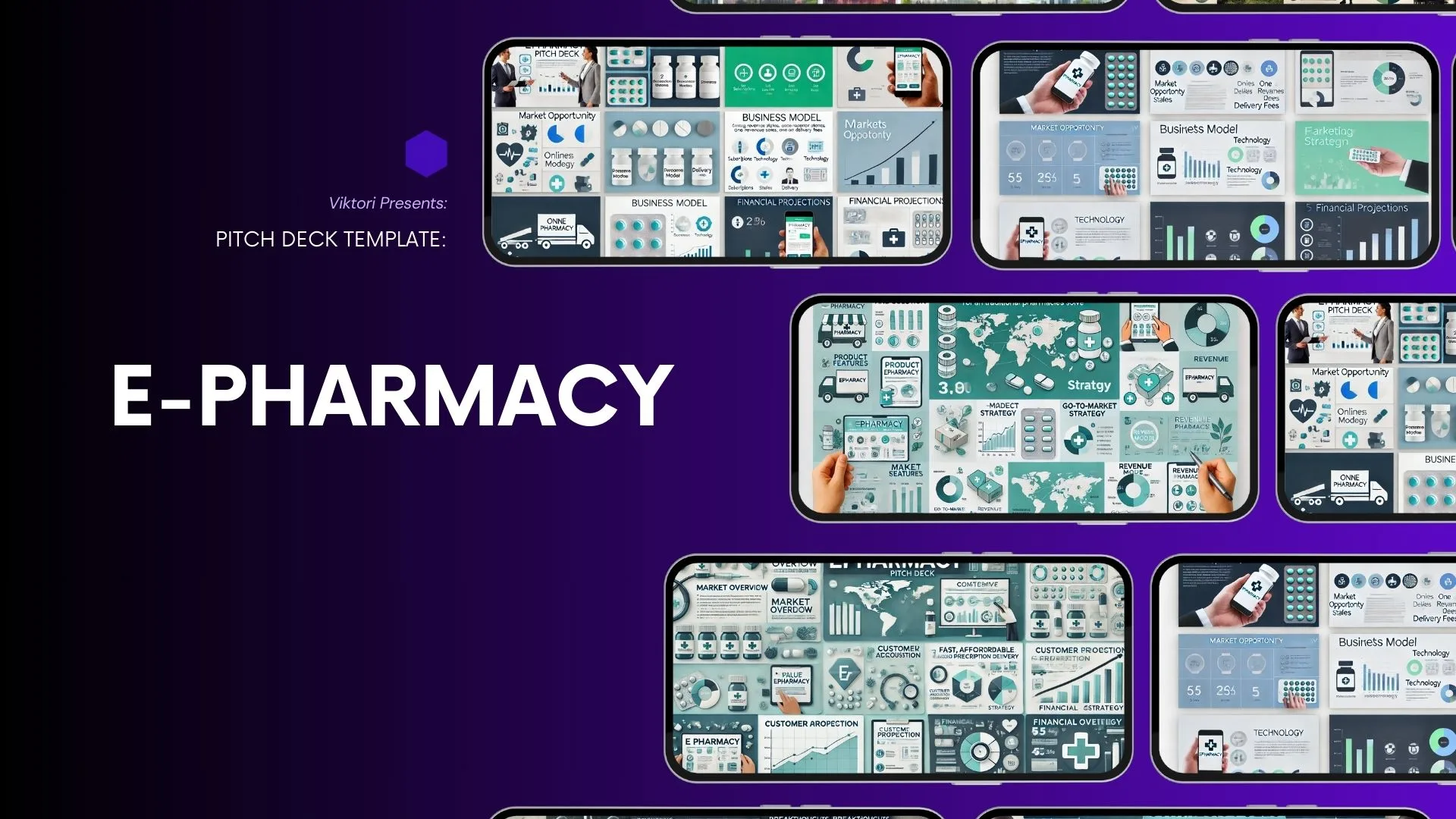
Investor Ready Pharma Pitch Deck | Template, Guide, Examples

Author: Viktor
Pharma Pitch Deck Expert. Ex Advertising. Founder of Viktori. $500mill In Funding. Bald Since 2010.
You’ve got the next big pharmaceutical breakthrough—a drug that might just change lives or at least put your competition out of commission (pun intended). But here’s the harsh reality: nobody’s funding a miracle they can’t see on paper. The truth is, your pharma pitch deck is the weak link. It’s not you; it’s your slides (and maybe that clip art on slide 3).
But don’t worry, I’m here to save your PowerPoint and your funding dreams. Hi, I’m Viktor—pitch deck expert, strategy enthusiast, and an unapologetic caffeine addict. Over the past 13 years, I’ve helped companies secure over $500 million in funding, including a few pharma startups that now have their logos on lab coats. I’ve seen firsthand how a killer deck can turn an underdog into an IPO candidate.
Why does a compelling pharma pitch deck matter? Because investors aren’t just buying into your product—they’re buying into your ability to sell it. A pitch deck isn’t just slides; it’s a narrative. It’s what makes your Phase III data actually interesting or explains why your 30-page mechanism-of-action diagram deserves $30 million in funding.
In this guide, I’ll walk you through:
- What a pharma pitch deck actually is (spoiler: it’s not just data dumped into Google Slides).
- Five steps to crafting an effective deck—from storytelling to visuals to the science they really care about.
- Real-world examples and templates that you can use, adapt, or just shamelessly copy (I won’t tell).
Get ready to turn your clinical trials and molecules into dollar signs. Let’s dive in and make those slides legendary.
What Is a Pharma Pitch Deck?
A pharma pitch deck is your gateway to securing the backing you need—whether it’s investment, partnerships, or sales. Think of it as the ultimate persuasive tool to translate complex science into a compelling business opportunity.
It’s not just about flashy slides; it’s about telling a story that connects the dots between your innovation, its market potential, and the profits that make investors sit up straighter in their chairs.
In the pharmaceutical world, where jargon and clinical data reign supreme, your pitch deck bridges the gap between your science and the financial world. It’s where groundbreaking research meets bottom-line logic. The goal? To make your audience believe in your vision, trust your expertise, and, ultimately, fund your success.
Why Is a Pitch Deck Essential for Pharma?
Whether you’re seeking funding, forming partnerships, or pitching to potential buyers, a pitch deck developed by a pitch deck expert is the difference between “Let’s talk more” and “We’ll pass, thanks.”
1. Securing Funding from Investors
The pharma industry is one of the most capital-intensive sectors, with the average drug costing $2.6 billion to develop and bring to market. Convincing investors to back your project isn’t about presenting raw data; it’s about telling a story that connects your breakthrough science with financial returns.
A well-crafted pitch deck does exactly that. It organizes your narrative into a clear, compelling format that addresses the questions investors care about most:
- How big is the opportunity?
- How unique is your solution?
- What’s the path to profitability?
Studies show that 75% of investors prefer presentations with clear, visual storytelling, making design and structure as critical as content. If your deck simplifies complex clinical data into actionable insights, you’re already ahead of the game.
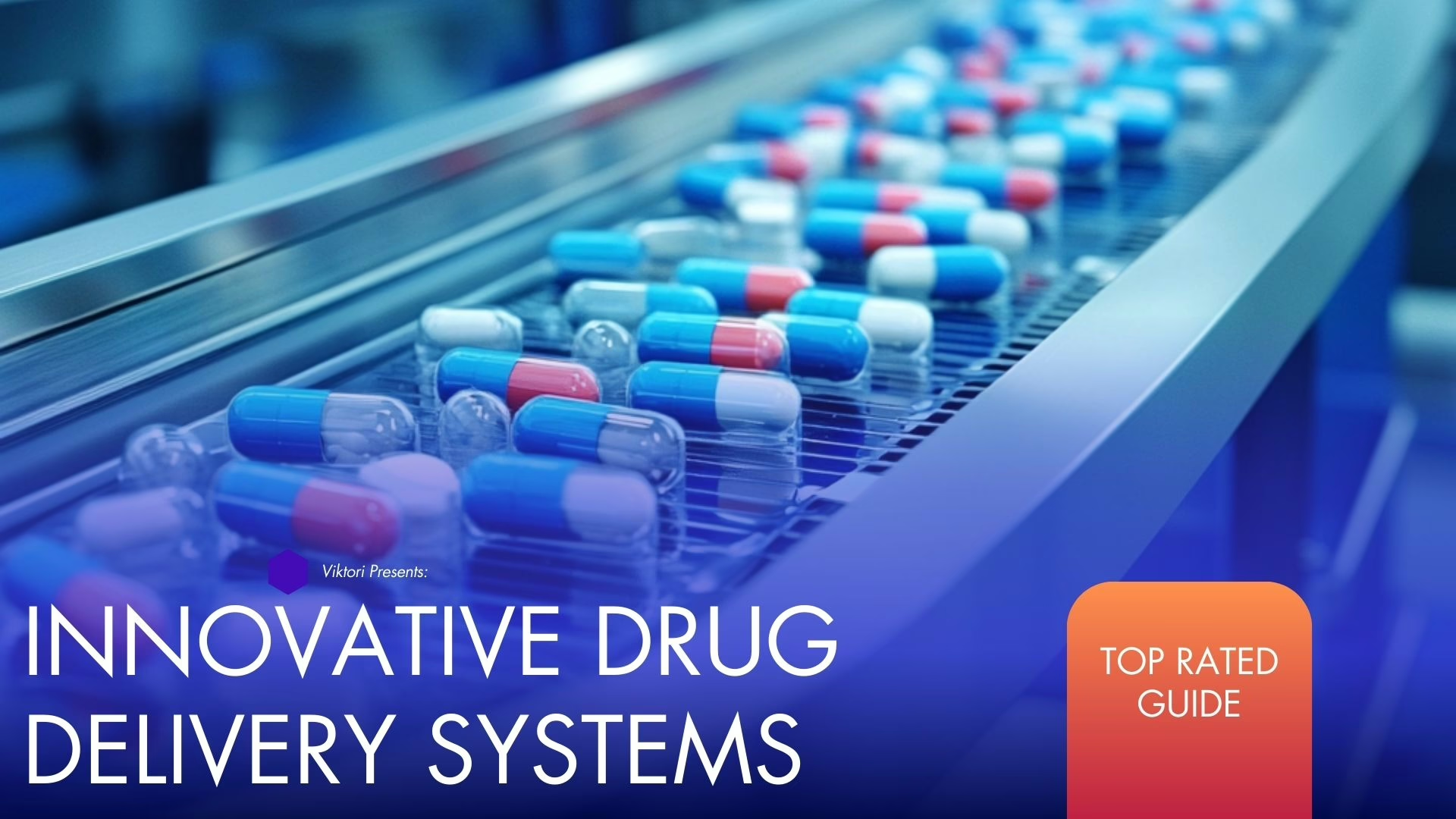
2. Presenting Deals to Potential Buyers
When pitching to potential buyers, such as large pharmaceutical companies or licensing partners, your deck acts as your sales representative. Buyers need more than just numbers—they need confidence that your innovation fits their pipeline, strategy, and goals.
A pharma pitch deck helps:
- Highlight the market gap your product addresses.
- Showcase your IP portfolio and scientific milestones.
- Prove you have a plan for scaling production and market entry.
In a world where M&A deals in pharma reached $200 billion in 2021, your pitch deck is the key to standing out and closing the deal.
3. Building Trust and Credibility with Stakeholders
Whether it’s regulators, board members, or research collaborators, trust is everything in the pharmaceutical world. A pitch deck builds that trust by demonstrating:
- Transparency: Clear slides with well-organized data inspire confidence.
- Scientific Rigor: Summarizing clinical trials, safety profiles, and efficacy results in an accessible way shows your expertise.
- Strategic Vision: Presenting a thoughtful roadmap with timelines and milestones reassures stakeholders that you know where you’re going.
In fact, investors are 40% more likely to engage with founders who demonstrate a deep understanding of their audience’s concerns, which makes tailoring your deck an essential part of the process.
Conclusion
In the pharma industry, where big money meets groundbreaking science, your pitch deck when done right, it bridges the gap between technical complexity and financial opportunity, giving your audience the clarity and confidence they need to say, “We’re in.”
Step-by-Step Guide to Creating a Investor Ready Pitch Presentation
Step 1: Define Your Objective
Before diving into your pitch deck, it’s crucial to clarify your primary goal. In the pharmaceutical industry, objectives can vary widely, and tailoring your presentation to your specific aim will enhance its effectiveness.
Here are common objectives to consider:
Securing Investment: Attracting venture capitalists, angel investors, or institutional funds to finance drug development, clinical trials, or market expansion.
Forming Partnerships: Collaborating with other pharmaceutical companies, biotech firms, or research institutions to co-develop products or share resources.
Licensing Agreements: Out-licensing your proprietary technology or compounds to larger entities for further development and commercialization.
Mergers and Acquisitions (M&A): Positioning your company for a strategic merger or acquisition to leverage synergies and expand market reach.
Strategic Alliances: Establishing alliances for joint ventures, co-marketing, or distribution agreements to enhance product reach and market penetration.
Clearly defining your objective will guide the content and tone of your pitch deck, ensuring it resonates with your target audience and aligns with industry-specific deal structures.
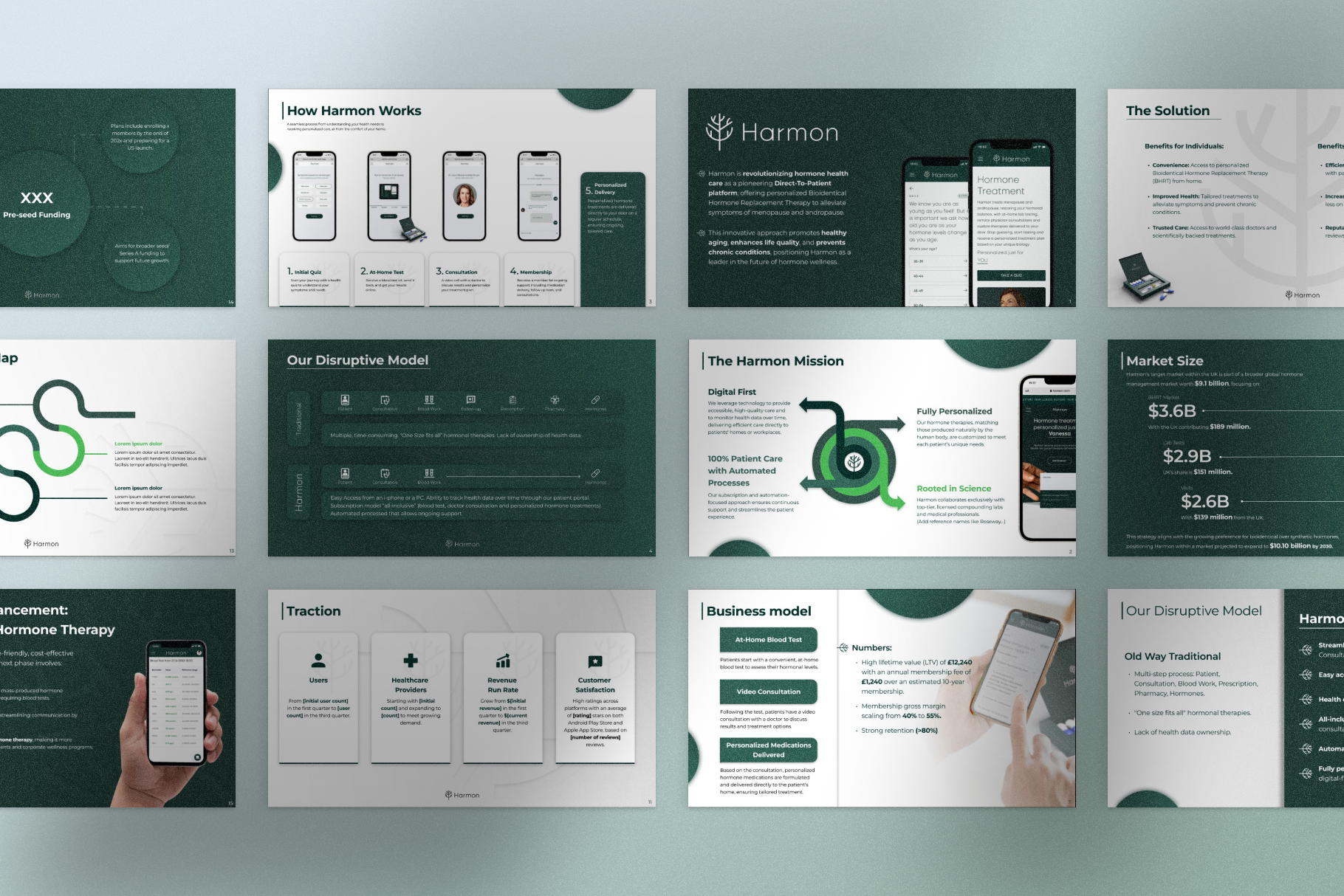
Step 2: Know Your Audience
Understanding who you’re pitching to is as important as the content of your pitch. Different stakeholders have varying priorities, and addressing these concerns directly can significantly enhance your pitch’s impact. Consider the following audience types and their primary concerns:
Venture Capitalists (VCs):
- Return on Investment (ROI): VCs are keenly interested in the potential financial returns and the timeline to profitability.
- Market Trends: They look for alignment with current and projected market trends to ensure the product’s relevance and demand.
- Exit Strategy: Clear plans for acquisition, public offering, or other exit mechanisms are crucial.
Pharmaceutical Companies:
- Strategic Fit: How well does your product complement their existing portfolio?
- Regulatory Compliance: Assurance that your product meets all necessary regulatory standards.
- Innovation Potential: The uniqueness and competitive advantage of your solution.
Regulatory Bodies:
- Safety and Efficacy: Comprehensive data demonstrating the product’s safety and effectiveness.
- Compliance: Adherence to industry regulations and standards.
Healthcare Providers:
- Clinical Benefits: Evidence of improved patient outcomes.
- Ease of Integration: How seamlessly the product can be incorporated into existing treatment protocols.
Patients and Advocacy Groups:
- Accessibility: Affordability and availability of the treatment.
- Quality of Life Improvements: Potential to enhance patient well-being.
By tailoring your pitch to address these specific concerns, you demonstrate a deep understanding of your audience’s priorities, thereby building trust and increasing the likelihood of a successful outcome.
Step 3: Use This 12 Slide Pitch Pharma Deck Template
This 12 slide pitch deck template is perfectly crafted to fit 80% of all pharma deals. If you need a tailor made template, I left a note on where you can ask for it, below. Alternatively, check out our database of pre-made pharma pitch deck templates.
1. Elevator Pitch
Purpose: Quickly convey the company’s essence and value proposition.
- Headline: Transforming Lives Through Innovative Pharmaceuticals
- Content:
- Problem Statement: “Millions suffer from [specific issue, e.g., rare diseases, drug resistance], with limited effective treatments available.”
- Solution Summary: “Our cutting-edge [technology/drug] targets this gap, offering a faster, safer, and more affordable solution.”
- Call-to-Action: “Join us in revolutionizing healthcare and creating a healthier future.”
- Visuals: A sleek logo, an impactful image (e.g., a researcher in action or a molecular visualization of the drug), and one compelling statistic like, “95% of patients with X condition lack effective treatments.”
If you need more tips on how to build this slide, check out my elevator pitch article.
2. Investor Highlights
Purpose: Provide a snapshot of compelling reasons to invest.
- Headline: Why Partner with Us?
- Content:
- Market Size: “[Condition] affects X million people globally, creating a $Y billion market opportunity.”
- Unique Technology: “Proprietary platform with X patents filed.”
- Progress: “Completed Phase 1 clinical trials with 90% success rate.”
- Partnerships: “Collaborating with [prestigious institutions/partners].”
- Financial Projections: “Targeting $X million in annual revenue by [year].”
- Visuals: A clean infographic with icons representing each point, coupled with a chart showing market growth trends.
3. Industry Problem
Purpose: Create urgency by spotlighting the pain point.
- Headline: The Critical Unmet Need in Healthcare
- Content:
- Problem: “[Disease/condition] affects X million annually, with limited or no effective treatment options.”
- Impact: “Patients face [issues, e.g., side effects, high costs, prolonged suffering], while the healthcare system incurs $X billion annually in treatment costs.”
- Consequence: “Without innovation, [projected increase in prevalence or economic burden by 2030].”
- Visuals: A graph showing disease prevalence over time, alongside a patient story or image that humanizes the problem.
Check out the problem slide article for more tips.
4. Target Market Opportunity
Purpose: Highlight the scale and significance of the opportunity.
- Headline: A $Y Billion Market Ready for Disruption
- Content:
- TAM (Total Addressable Market): “The global market for [specific condition] is $Y billion, growing at a CAGR of Z%.”
- SAM (Serviceable Addressable Market): “We are targeting [geographies/populations] worth $X billion.”
- SOM (Serviceable Obtainable Market): “Initial rollout in [markets] will capture $W million in revenue.”
- Competitive Landscape: “The field is dominated by [existing solutions/competitors], which are [inefficient/expensive/limited in scope].”
- Visuals: A layered pie chart or heat map showcasing TAM, SAM, and SOM.
5. The Solution
Purpose: Demonstrate how your solution uniquely addresses the problem.
- Headline: The Breakthrough Solution for [Condition]
- Content:
- What It Is: “Our solution, [product name], is a [type of product, e.g., drug, therapy, platform] designed to [specific benefit, e.g., target X pathway, reduce side effects].”
- How It Works: “Using [e.g., AI, gene editing], it precisely targets [mechanism or disease area].”
- Key Outcomes: “90% improvement in efficacy, 40% reduction in side effects, $X billion potential healthcare savings.”
- Competitive Edge: “Addresses root causes rather than symptoms, unlike [competitors].”
- Visuals: A simple diagram or animation of the mechanism of action, with before-and-after visuals to illustrate efficacy.
Check out the solution slide article for more tips.
6. Competitive Advantage
Purpose: Highlight differentiation and why you’ll win.
- Headline: Our Unique Competitive Edge
- Content:
- Technology: “Proprietary platform integrates [AI, CRISPR, or other innovation], reducing R&D cycles by X%.”
- Clinical Results: “Achieved X% higher efficacy and Y% lower adverse reactions than leading competitors.”
- Barriers to Entry: “Protected by X patents and exclusive partnerships with [key stakeholders].”
- Expert Team: “Led by [CEO/Chief Scientist] with 20+ years in [specific field].”
- Cost Efficiency: “Manufacturing at $X/unit, making it X% cheaper than alternatives.”
- Visuals: A comparison chart showing how your product outperforms competitors across key metrics (e.g., cost, efficacy, scalability).
7. Go-to-Market Strategy
Purpose: Show a clear path from product development to market dominance.
- Headline: A Scalable Roadmap to Market Leadership
- Content:
- Regulatory Milestones: “Complete Phase II trials by Q2 2025, secure FDA approval by Q4 2026.”
- Initial Target Market: “Focus on [specific region/population] with the highest prevalence of [condition].”
- Partnerships: “Leverage collaborations with [distributors/healthcare providers/pharmacies].”
- Marketing Strategy: “Adopt a multi-channel approach: KOL endorsements, digital campaigns, and direct-to-patient education.”
- Expansion Plan: “Roll out in [additional markets] by [timeline], capturing X% of SAM.”
- Visuals: A strategic roadmap or Gantt chart with key milestones, supported by images of key partners.
Check out the GTM slide article for more tips.
8. Business Model
Purpose: Explain how the company makes money and its potential for scalability.
- Headline: Monetizing Innovation
- Content:
- Revenue Streams: “Primary: drug sales; Secondary: licensing and milestone payments.”
- Pricing Strategy: “Cost-plus pricing ensuring affordability while achieving [X%] margins.”
- Cost Structure: “R&D accounts for [X%], manufacturing [Y%].”
- Scalability: “Production scalable to meet demand growth with minimal incremental costs.”
- Recurring Revenue: “Long-term contracts with healthcare providers ensure revenue stability.”
- Visuals: A revenue flow diagram or simple financial projections showing growth trajectory.
9. Traction and Milestones
Purpose: Establish credibility by highlighting progress and achievements.
- Headline: Proven Success and Momentum
- Content:
- Clinical Milestones: “Phase I completed with X patients, demonstrating Y% efficacy.”
- Partnerships: “Signed agreements with [key organizations].”
- Operational Progress: “Established a GMP-compliant facility capable of producing X units annually.”
- Media/Recognition: “Featured in [notable publications or conferences].”
- Key Metrics: “$X in funding secured; Y% patient satisfaction in initial studies.”
- Visuals: A timeline with milestones or a chart showcasing traction metrics.
Check out the traction slide article for more tips.
10. Team
Purpose: Build trust and show the strength of the leadership team.
- Headline: Experienced Leaders, Proven Innovators
- Content:
- Leadership: “Led by [CEO], formerly of [relevant company], with 20 years in [specific field].”
- Scientific Expertise: “Chief Scientist, [Name], has authored X peer-reviewed studies in [relevant area].”
- Advisory Board: “Includes [Name], former head of [big pharmaceutical company] and [Name], a key opinion leader in [field].”
- Operations Team: Highlight manufacturing, marketing, and finance experts.
- Visuals: High-quality headshots with short bios and notable achievements.
11. Financials and Funding Ask
Purpose: Show financial viability and secure the desired funding.
- Headline: A High-Growth Opportunity
- Content:
- Current Financials: “Burn rate: $X/month; runway: [X months].”
- Projections: “Revenue of $X in 2026, growing to $Y by 2028 with [Z% CAGR].”
- Funding Ask: “Seeking $X million to complete clinical trials and scale operations.”
- Use of Funds: “X% for R&D, Y% for regulatory approval, Z% for market entry.”
- ROI for Investors: “Expected [X%] IRR within [X years].”
- Visuals: Bar graphs for financial projections and a pie chart for fund allocation.
Check out the financials slide article for more tips.
12. Vision and Next Steps
Purpose: Inspire the audience with a bold vision and clear call to action.
- Headline: Transforming the Future of Healthcare
- Content:
- Vision: “To ensure that every patient suffering from [condition] has access to life-changing treatment.”
- Next Steps: “Schedule one-on-one meetings to discuss investment opportunities and detailed business plans.”
- Call-to-Action: “Join us in reshaping the future of healthcare.”
- Visuals: Inspirational imagery (e.g., a cured patient story or future lab rendering) and contact information with a prominent call-to-action.
Step 4: Design a Professional Pitch Deck
Your pitch deck’s design plays a significant role in capturing attention and conveying professionalism. A well-designed deck ensures your content is visually appealing and easy to follow, leaving a lasting impression on your audience.
Creating a pitch deck from scratch can be time-consuming, but with the right tools and templates, you can streamline the process and ensure a professional result.
Here are some resources to help you get started:
Download a Premade Pitch Deck Presentation Template
- Access ready-made pharma pitch deck templates designed for various project types, including residential, commercial, and mixed-use developments.
- Each template includes:
- Pre-formatted slides for investor highlights, financials, and location analysis.
- Editable placeholders for property visuals, charts, and project details.
- Instructions for customizing fonts, colors, and layouts to match your branding.

Presentation Books
Must have popular books that 1000s of presenters and CEO's read in order to help them become better at communicating their ideas. Click on the image for the full article.
Recommended Tools for Creating Templates
- Canva: Great for creating visually appealing, customizable templates with ease.
- PowerPoint: A reliable choice for building professional presentations with advanced features like slide animations and data integration.
- Gamma: Ai pitch deck tool that makes a decent presentation if you’re strapped for budget. I wouldn’t recommend this if you’re pitching a project that’s 7 figures +. Check out the Gamma generated deck below.
- Professional Design Services: For high-stakes presentations, consider hiring a pitch deck expert to create a polished, custom template that reflects your brand’s professionalism.
Tips for Designing a Polished Template
- Use Clean, Consistent Fonts and Colors:
- Select no more than two fonts: one for headings and another for body text.
- Stick to a color palette that aligns with your branding or project theme.
- Avoid overly decorative fonts or clashing colors that distract from your message.
- Incorporate High-Quality Visuals:
- Include images that showcase your project in the best light.
- Add charts and graphs to present financial data and market trends clearly and concisely.
- Use infographics to simplify complex information, such as timelines, leasing plans, or development phases.
- Maintain Slide Consistency:
- Ensure all slides have aligned text boxes, consistent margins, and matching layouts.
- Use bullet points and icons to break up text-heavy slides for better readability.
Alternatively, book a call and get the full pitch deck done. Hands-off.
Step 5: Practice and Refine Your Pitch
Perfecting your pitch is as much about preparation as it is about the content of your deck. You need to convey confidence, clarity, and expertise, even when facing tough questions. Here are specific tips to help you refine your delivery:
1. Rehearse Like It’s Showtime
- Simulate Real Scenarios: Practice your pitch as if you’re presenting to an actual investor. Stand up, use your slides, and set a timer to stick to the allotted time.
- Record Yourself: Watching a playback can reveal areas where your tone, pacing, or gestures need improvement.
- Present to a Test Audience: Run your pitch by colleagues, mentors, or industry insiders to gather feedback.
2. Master the Flow
- Hook Early: Nail your opening lines to capture attention. Start with a compelling statistic, a success story, or a bold claim.
- Transition Smoothly: Ensure seamless transitions between slides, maintaining the narrative thread.
3. Be Concise and Clear
- Stick to the Essentials: Avoid drowning your audience in unnecessary details. Summarize complex concepts with visuals and analogies.
- Anticipate Attention Spans: Research suggests that investor attention drops significantly after 15 minutes, so focus on key takeaways.
4. Prepare for Curveballs
- Develop a FAQ Playbook: Anticipate potential questions (e.g., about competitors, risks, or regulatory timelines) and rehearse concise answers.
- Pivot Without Panic: If you’re unsure about a question, acknowledge it honestly and offer to follow up later.
5. Refine Your Delivery Style
- Engage with Eye Contact: Build rapport by making eye contact with your audience, not just your slides.
- Adjust Your Tone: Match your delivery style to your audience, blending professionalism with enthusiasm.
- Use Body Language: Stand confidently, gesture naturally, and avoid nervous habits.
20 Questions an Investor Might Ask—and Answers
What problem does your product solve?
- Answer: Our product addresses [specific unmet need], currently impacting [size or demographics of the population]. Existing treatments fail due to [reason], and we provide a solution by [unique approach].
How large is your target market?
- Answer: The total addressable market (TAM) is $[value], with a serviceable addressable market (SAM) of $[value]. We estimate capturing [percentage] of the SAM within [timeframe].
What makes your product unique?
- Answer: Unlike competitors, our product [highlight unique feature], backed by [patents/scientific validation].
What stage is your clinical development at?
- Answer: We are currently in [phase], having completed [milestone]. Our next steps include [upcoming development stages].
What regulatory hurdles do you anticipate?
- Answer: We’ve accounted for [specific hurdles, e.g., FDA/EMA requirements], and we’re on track to meet these with [timeline/strategy].
What is your competitive advantage?
- Answer: Our competitive advantage lies in [key differentiator, e.g., cost-effectiveness, superior efficacy, speed to market].
What is your business model?
- Answer: Our business model focuses on [licensing, direct sales, partnerships], generating revenue through [specific streams].
What is your intellectual property position?
- Answer: We hold [number] patents, covering [details], with additional filings planned for [new discoveries].
Who are your competitors?
- Answer: Key competitors include [list]. We differentiate by [specific competitive edge].
How do you plan to scale?
- Answer: We’ll scale through [strategies, e.g., partnerships, regional expansion, additional funding].
- What are your milestones for the next 12 months?
- Answer: Milestones include [list, e.g., Phase II trial completion, regulatory submissions, partnerships].
- How much funding are you seeking, and how will you use it?
- Answer: We are raising $[amount] to fund [specific activities, e.g., clinical trials, hiring, marketing].
- What’s your projected revenue timeline?
- Answer: We anticipate generating revenue by [timeframe], with projected earnings of $[value] by [year].
- What risks does your product face?
- Answer: Key risks include [list risks]. We’re mitigating these by [risk management strategies].
- Who is on your team?
- Answer: Our team includes [key individuals], each bringing [specific expertise, e.g., clinical, regulatory, business].
- What partnerships or collaborations do you have?
- Answer: We’ve partnered with [names], focused on [specific projects or benefits].
- What’s your pricing and reimbursement strategy?
- Answer: Pricing is based on [cost model], with reimbursement discussions underway with [payers].
- What is your exit strategy?
- Answer: Our strategy includes [IPO, acquisition, licensing], aligned with investor goals for [specific timeframe].
- What’s your timeline to market?
- Answer: We expect to reach market by [year], pending [regulatory approvals, manufacturing scale-up].
- Why should we invest in you now?
- Answer: This is a pivotal time due to [key milestone or development], presenting a unique opportunity to gain early access to [market or innovation].
3 Pharma Pitch Deck Examples
Innovative Drug Delivery Systems
Overview: This pitch deck presents a novel approach to enhancing drug efficacy through advanced delivery mechanisms.
Key Components:
Problem Statement: Clearly defines the limitations of current drug administration methods, emphasizing issues like reduced efficacy and patient compliance.
Solution: Introduces a proprietary drug delivery system designed to improve absorption rates and patient outcomes.
Market Analysis: Provides data on the growing demand for efficient drug delivery technologies, supported by market size and growth projections.
Clinical Validation: Presents preliminary clinical trial results demonstrating the system’s effectiveness and safety.
Financial Projections: Outlines revenue forecasts, funding requirements, and expected return on investment.
Effectiveness: This deck excels by succinctly identifying a critical problem and presenting a tangible, innovative solution. The inclusion of clinical data builds credibility, while clear financial projections provide investors with a roadmap to profitability.
Pharmaceutical Packaging Solutions
Overview: This presentation focuses on a company offering advanced packaging solutions to ensure drug integrity and compliance with regulatory standards.
Key Components:
Elevator Pitch: Starts with a compelling headline emphasizing the importance of precision in pharmaceutical packaging.
Investment Highlights: Showcases market growth potential, industry trends, and the company’s unique value proposition.
Product Features: Details innovative packaging designs that enhance sterility, tamper evidence, and compliance.
Market Opportunity: Analyzes the expanding pharmaceutical packaging market, supported by statistical data.
Revenue Model: Explains the business model, pricing strategy, and projected financial growth.
Effectiveness: The deck effectively combines market data with product innovation, making a strong case for investment. The clear articulation of market needs and how the company’s solutions meet those needs demonstrates a well-thought-out strategy.
E-Pharmacy Platform
Overview: This pitch deck outlines a digital platform aimed at revolutionizing the pharmaceutical retail sector by providing online access to medications.
Key Components:
Introduction: Introduces the e-pharmacy concept and its relevance in the current healthcare landscape.
Problem Identification: Highlights challenges in traditional pharmacy access, such as convenience and availability.
Solution Offering: Describes the platform’s features, including user-friendly interfaces, home delivery, and prescription management.
Market Potential: Presents data on the growing acceptance of online healthcare services and projected market growth.
Business Model: Details revenue streams, including sales margins, subscription services, and partnerships.
Effectiveness: This deck stands out by addressing a timely issue with a scalable digital solution. The comprehensive market analysis and clear depiction of the platform’s benefits to consumers and stakeholders make it compelling for investors.
Advanced Insights for Crafting a Pitch Deck For Your Pharma Investment That Converts
10 insights. These are things no advisor, startup event organizer or coach will tell you for free. We’ve done the research and combined it with our experience to give you these insights with no strings attached.
Market Analysis and Trends in Pharmaceutical Industry for Pitch Deck Development
Importance of Market Analysis and Trends in Pharma Pitch Decks: Market Analysis and Trends are crucial in a pharmaceutical pitch deck as they provide a clear understanding of the current market scenario, potential growth areas, and competitive landscape. This insight is essential for convincing investors and stakeholders that your idea or product has a viable place in the market.
Specific Research and Insights:
- Evolving Disease Profiles: Highlight current research on emerging diseases and shifts in global health patterns. For instance, the rise in chronic diseases like diabetes or the emergence of new viral threats.
- Technological Advancements: Focus on cutting-edge technologies such as CRISPR, AI in drug discovery, and telemedicine, and how they are reshaping the industry.
- Regulatory Changes: Update on recent FDA regulations, global healthcare policies, and their impact on pharmaceutical companies.
- Market Size and Forecast: Provide statistics on the size of the pharmaceutical market and forecasted growth, segmented by regions, product types, or therapeutic areas.
- Consumer Behavior: Insights into patient preferences, drug adherence patterns, and the shift towards personalized medicine.
Actions to Take for Incorporating Market Analysis into a Pharma Pitch Deck:
- Conduct Comprehensive Research: Utilize reputable sources like WHO reports, pharmaceutical market analysis from firms like McKinsey & Company or Deloitte, and scientific publications for the latest data and trends.
- Identify Niche Markets: Based on the research, identify niche markets or unmet medical needs your product or idea can address. This shows potential for growth and opportunity.
- Benchmark Against Competitors: Analyze key competitors in your target market. Highlight your unique value proposition compared to existing solutions.
- Integrate Real-World Data: Use case studies or real-world examples to demonstrate how trends are impacting the industry and how your product fits into this evolving landscape.
- Future Outlook: Discuss how ongoing trends will shape the future of the market and how your product is positioned to evolve with these changes.
- Create Visual Representations: Develop charts, graphs, and infographics to visually represent market trends and data. This makes your pitch deck more engaging and easier to understand.
- Customize for Your Audience: Tailor the market analysis to reflect the interests and concerns of your specific audience, whether they are investors, partners, or other stakeholders.
By focusing on these areas, your pharma pitch deck will not only be well-researched and informative but also demonstrate a deep understanding of the market dynamics, increasing its effectiveness in attracting investment and support.
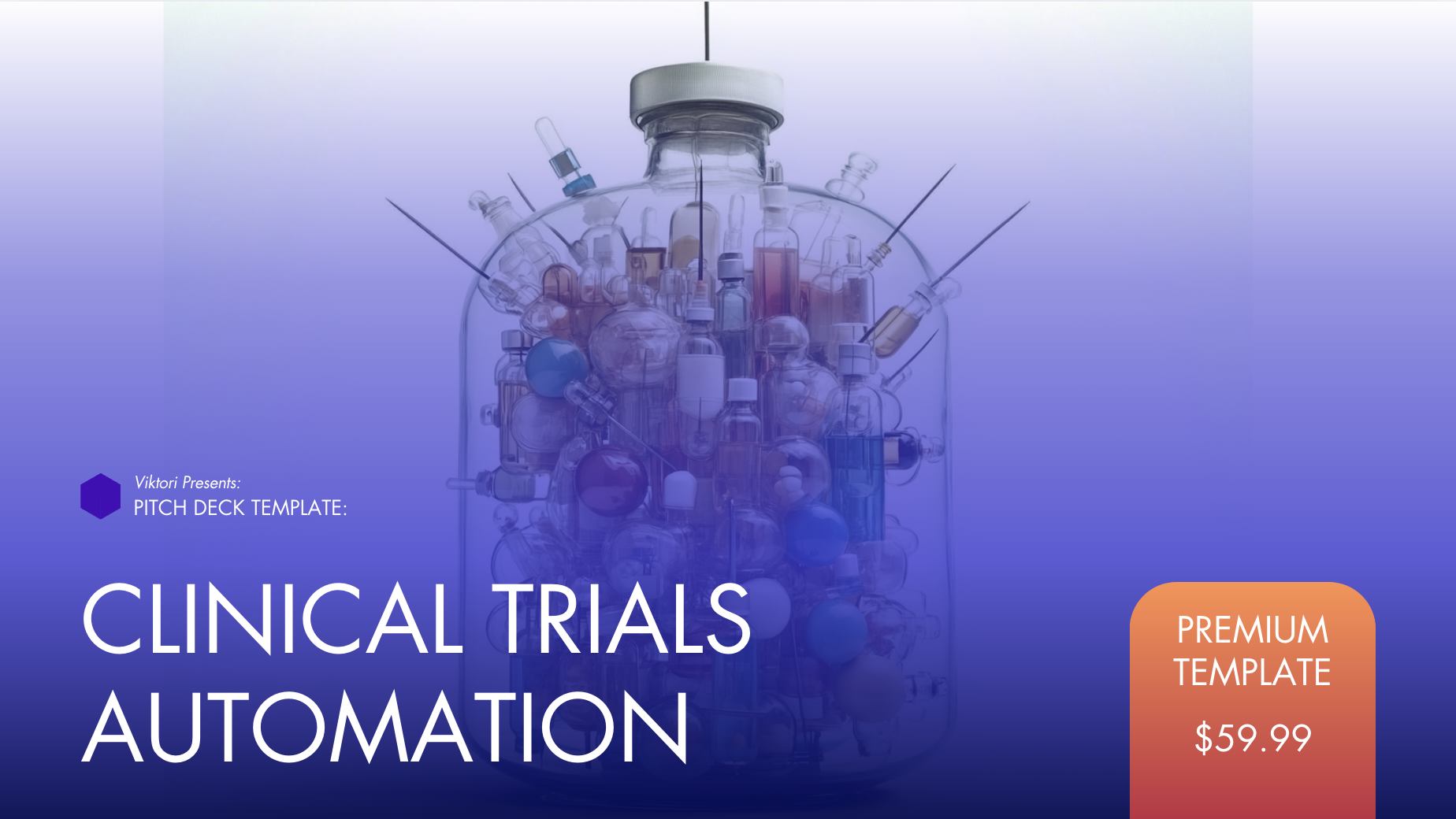
Regulatory Compliance and Approval Processes in Pharmaceutical Industry for Pitch Deck Development
Importance of Regulatory Compliance and Approval Processes in Pharma Pitch Decks: Understanding and effectively communicating regulatory compliance and approval processes is vital in a pharmaceutical pitch deck. It assures potential investors and stakeholders that the product or service is not only innovative but also aligns with the stringent regulatory standards of the industry. This understanding mitigates risk and demonstrates the feasibility and longevity of the product in the market.
Specific Research and Insights:
- FDA Approval Process: Detail the steps involved in obtaining FDA approval, including preclinical research, clinical trials (Phases I-IV), and the New Drug Application (NDA) process.
- Global Regulatory Variations: Address the differences in regulatory processes across key markets like the EMA (European Medicines Agency) and other national bodies.
- Compliance Challenges: Discuss common compliance challenges and how your product is designed to navigate these effectively.
- Recent Regulatory Changes: Include recent changes or updates in regulatory policies that could impact the development and marketing of pharmaceutical products.
Actions to Take for Incorporating Regulatory Insights into a Pharma Pitch Deck:
- Gather Accurate Information: Utilize resources from the FDA, EMA, and other regulatory bodies. Stay updated with publications and reports from regulatory experts and pharmaceutical consultants.
- Consult Regulatory Experts: Engage with regulatory affairs professionals to ensure that your pitch deck reflects a thorough understanding of the necessary compliance processes.
- Risk Assessment: Analyze and present potential regulatory risks and your strategies to mitigate them. This shows foresight and preparedness.
- Timeline and Milestones: Create a clear timeline of the expected regulatory process, including key milestones. This helps in setting realistic expectations for product development and market entry.
- Case Studies of Regulatory Success: Incorporate case studies of pharmaceutical products that have successfully navigated the regulatory landscape. This can serve as a proof of concept and inspire confidence.
- Customize for Specific Products: Tailor the regulatory information based on the type of pharmaceutical product (e.g., biologics, small molecules, medical devices) as each category has different regulatory pathways.
- Visual Aids: Use flowcharts or diagrams to simplify complex regulatory processes, making them easier for your audience to comprehend.
- Link Regulatory Strategy to Business Goals: Demonstrate how your regulatory strategy aligns with and supports your overall business objectives.
By integrating these elements into your pitch deck, you’ll be able to effectively communicate the importance of regulatory compliance and approval processes, showcasing not just the innovation behind your product, but also its practical viability and market readiness.
Innovation in Drug Discovery and Development for Pharmaceutical Pitch Decks
Importance of Innovation in Drug Discovery and Development in Pharma Pitch Decks: In the pharmaceutical industry, innovation in drug discovery and development is a key driver of success. Highlighting innovation in your pitch deck not only showcases your product’s unique value proposition but also demonstrates your commitment to addressing unmet medical needs with cutting-edge solutions. This aspect is crucial for attracting investors who are looking for opportunities that have the potential to disrupt the market and offer significant returns.
Specific Research and Insights:
- Latest Drug Discovery Techniques: Research on advanced methodologies like AI-driven drug discovery, high-throughput screening, and genomics.
- Breakthrough Treatments: Information on recent breakthrough treatments, especially in areas like oncology, rare diseases, and personalized medicine.
- Clinical Trial Innovations: Developments in clinical trial designs, such as adaptive trials or the use of real-world evidence.
- Collaboration and Partnerships: Trends in strategic partnerships and collaborations that accelerate drug development processes.
Actions to Take for Incorporating Innovation into a Pharma Pitch Deck:
- Showcase Cutting-Edge Research: Present the latest research and technologies you are utilizing in your drug discovery and development processes. Use reputable sources like scientific journals and industry reports.
- Emphasize Unique Aspects: Clearly articulate what sets your innovation apart from existing solutions. This could be a novel mechanism of action, faster development times, or more effective treatment outcomes.
- Clinical Trial Data: If available, include promising data from preclinical studies or clinical trials that underscore the efficacy and safety of your innovation.
- Highlight Intellectual Property: Discuss patents or proprietary technology that protect your innovation, reinforcing its market value and potential for return on investment.
- Address Market Needs: Connect your innovation to specific unmet needs in the market, demonstrating your understanding of the industry landscape and patient requirements.
- Use Visuals and Infographics: Employ visuals to explain complex scientific concepts. Infographics and diagrams can make your innovation more accessible to a non-specialist audience.
- Discuss Scalability and Manufacturing: Outline your plans for scaling up production and distribution, showing that you have a feasible roadmap for bringing your innovation to market.
- Tailor Content for Audience: Adapt the level of technical detail based on your audience’s familiarity with pharmaceutical research and development.
By incorporating these elements, your pitch deck will not only highlight the innovative aspects of your drug discovery and development but also build a compelling case for the investment, showcasing the potential impact and profitability of your pharmaceutical product.
Investor and Funding Insights for Pharmaceutical Pitch Decks
Importance of Investor and Funding Insights in Pharma Pitch Decks: In a pharmaceutical pitch deck, understanding the investor landscape and funding mechanisms is critical. It’s not just about showcasing your product or innovation; it’s also about demonstrating how you align with the financial expectations and strategic interests of potential investors. Presenting clear, well-researched funding insights shows that you are not only a scientific innovator but also a savvy business thinker.
Specific Research and Insights:
- Investor Profiles: Research on the types of investors interested in pharmaceutical ventures, such as venture capitalists, angel investors, pharmaceutical corporations, and government grants.
- Investment Trends: Insights into current investment trends in the pharmaceutical sector, including areas of high interest like biotechnology, digital health, and personalized medicine.
- Funding Case Studies: Analysis of recent successful funding rounds in the pharmaceutical industry, highlighting key factors that attracted investors.
- ROI Expectations: Understanding the return on investment (ROI) expectations and timelines typical for pharmaceutical investments.
Actions to Take for Incorporating Investor and Funding Insights into a Pharma Pitch Deck:
- Identify the Right Investors: Research and identify potential investors who have a history of investing in pharmaceutical projects, especially those that align with your specific niche.
- Tailor Your Pitch: Customize your pitch deck to resonate with the specific interests and investment philosophy of the investors you are targeting.
- Highlight Financial Viability: Include detailed financial projections, break-even analysis, and potential profitability. This shows that you understand the financial aspects of bringing a pharmaceutical product to market.
- Discuss Funding Stages: Clearly outline the various stages of funding you’ll need, what each stage will achieve, and how it contributes to the overall development and commercialization of the product.
- Showcase Your Team: Emphasize the expertise and track record of your team, as investors often invest in people as much as in ideas.
- Use Success Stories for Credibility: Incorporate case studies or examples of similar companies that have successfully navigated the funding landscape. This adds credibility to your pitch.
- Detail Use of Funds: Be specific about how you intend to use the funding. Investors want to see that their money will be used efficiently and effectively.
- Prepare for Due Diligence: Anticipate and prepare for the due diligence process. Have all necessary documentation, data, and information ready to demonstrate your thoroughness and professionalism.
By effectively integrating these insights into your pitch deck, you’ll be able to present a compelling and persuasive case to potential investors, showcasing not only the scientific merit of your pharmaceutical innovation but also its potential for financial success and growth.
Intellectual Property and Patent Strategies for Pharmaceutical Pitch Decks
Importance of Intellectual Property and Patent Strategies in Pharma Pitch Decks: In the pharmaceutical industry, where research and development are pivotal, the role of intellectual property (IP) and patent strategies cannot be overstated. For a pitch deck, detailing your approach to IP protection not only safeguards your innovations but also significantly enhances your venture’s attractiveness to investors. Demonstrating a clear, strategic approach to IP and patents signifies that your business is built on a solid foundation with a competitive edge and a clear path to market exclusivity.
Specific Research and Insights:
- Patent Landscape: Understanding the current patent landscape in your specific pharmaceutical field, including key patents and their holders.
- Patent Life Cycle Management: Strategies for extending the commercial life of a drug, such as formulation patents, method-of-use patents, and strategic patent filings.
- Global IP Considerations: The importance of securing IP rights in different markets, especially considering the variation in patent laws across countries.
- IP as a Business Asset: Viewing IP not just as legal protection but as a core business asset that can be leveraged for funding, partnerships, and market positioning.
Actions to Take for Incorporating IP and Patent Strategies into a Pharma Pitch Deck:
- Conduct a Thorough IP Audit: Begin by conducting a comprehensive audit of your existing and potential IP assets. This should include patent searches to ensure novelty and to avoid infringement.
- Develop a Clear IP Strategy: Articulate a clear strategy for protecting your IP. This may include filing for patents, maintaining trade secrets, or a combination of both.
- Highlight Patent Status: Clearly state the status of your patents (pending, granted) and the geographical coverage. If you have a patent pending, explain the steps being taken towards securing it.
- Explain Patent Strategy’s Role in Business Plan: Illustrate how your patent strategy aligns with and supports your overall business plan and market entry strategy.
- Address Freedom to Operate: Include a freedom-to-operate analysis, showing that your development and commercialization plans do not infringe on others’ IP rights.
- Discuss Future IP Plans: Outline future plans for IP, such as additional filings, international expansions, or strategies for defending your IP rights.
- Showcase Competitive Edge: Use your IP position to highlight your competitive edge in the market. This can include exclusivity in a certain therapeutic area or a novel drug delivery system.
- Prepare for Investor Due Diligence: Be prepared for potential investor due diligence on your IP portfolio. This includes having detailed records and documentation of your IP strategy and filings.
By effectively presenting your intellectual property and patent strategy in your pitch deck, you’re not just showcasing your innovation’s uniqueness, but you’re also demonstrating a strategic approach to market protection and value creation, which is crucial for attracting savvy investors in the pharmaceutical sector.
Case Studies of Successful Pharma Startups for Pitch Decks
Importance of Case Studies in Pharma Pitch Decks: Incorporating case studies of successful pharmaceutical startups in your pitch deck serves multiple purposes. It provides real-world evidence of success, illustrates the practical application of strategies, and inspires confidence in potential investors. Case studies can demonstrate the feasibility of your business model, the effectiveness of your technology, and the potential for market success.
Specific Research and Insights:
- Success Stories: Research and identify pharmaceutical startups that have successfully brought a product to market, secured significant funding, or achieved a noteworthy milestone (like FDA approval).
- Strategic Moves: Analyze the key strategic decisions that contributed to these startups’ success, such as unique marketing approaches, innovative research methodologies, or effective regulatory navigation.
- Challenges and Solutions: Document the challenges these startups faced and how they overcame them. This could include overcoming regulatory hurdles, solving complex R&D problems, or securing funding in a competitive environment.
Actions to Take for Incorporating Case Studies into a Pharma Pitch Deck:
- Select Relevant Case Studies: Choose case studies that are relevant to your startup in terms of product type, target market, or the challenges you are facing. This relevance makes the case studies more impactful for your audience.
- Highlight Key Learnings: Extract and emphasize the key learnings from each case study. Explain how these learnings have influenced your business strategy and decision-making process.
- Show Parallel Paths: Draw parallels between these successful startups and your company, highlighting similarities in approach, market, or technology.
- Use Data to Support Claims: Where possible, use quantitative data to support the success stories. This could include funding amounts, market share, revenue growth, or clinical trial results.
- Visual Storytelling: Use visuals like timelines, growth charts, or infographics to make the case studies engaging and easy to understand.
- Discuss Adaptation and Improvement: Explain how your strategy adapts or improves upon the strategies used by the case study companies. This demonstrates innovation and forward-thinking.
- Prepare for Questions: Anticipate and prepare for potential questions or skepticism from investors regarding the applicability of these case studies to your venture.
- Cite Sources: Ensure that all case studies are well-cited from credible sources. This adds legitimacy to your pitch and demonstrates thorough research.
By incorporating well-researched and relevant case studies into your pharmaceutical pitch deck, you can effectively showcase the potential for success in your venture. These real-world examples serve as powerful tools for building credibility, illustrating market opportunities, and reinforcing the feasibility of your proposed strategies.

Patient-Centric Approaches in Pharmaceutical Pitch Decks
Importance of Patient-Centric Approaches in Pharma Pitch Decks: Emphasizing patient-centric approaches in your pharmaceutical pitch deck is crucial for demonstrating alignment with current healthcare trends and patient needs. This approach reflects a deep understanding of the end-users — the patients — and their experiences. It shows that your product or service is designed not just from a scientific or commercial perspective, but with a focus on improving patient outcomes, adherence, and satisfaction, which is increasingly important in the healthcare sector.
Specific Research and Insights:
- Patient Engagement Strategies: Research on effective patient engagement strategies, such as personalized medicine, patient support programs, and digital health tools.
- Impact on Clinical Outcomes: Studies showing how patient-centric approaches can lead to improved clinical outcomes, higher medication adherence, and better overall health.
- Market Demand for Patient-Centric Solutions: Analysis of market trends indicating a growing demand for patient-centric solutions in healthcare.
Actions to Take for Incorporating Patient-Centric Approaches into a Pharma Pitch Deck:
- Highlight Patient Insights: Include research or data that provide insights into patient needs, preferences, and behaviors related to your product.
- Showcase Patient Engagement Tools: If applicable, showcase any patient engagement tools or technologies you are using or developing, such as mobile apps for medication tracking or patient education platforms.
- Demonstrate Impact on Patient Outcomes: Use data or case studies to demonstrate how your product or service positively impacts patient outcomes. This can include clinical trial results, patient testimonials, or real-world evidence.
- Patient-Centric Design and Development: Discuss how patient feedback and insights have been integrated into the design and development of your product. This could include patient advisory boards or user testing results.
- Customize Solutions for Different Patient Groups: Address how your product meets the needs of different patient demographics, such as age groups, disease stages, or specific patient communities.
- Health Economics and Outcomes Research (HEOR): Present any HEOR data that supports the value proposition of your patient-centric approach, such as cost-effectiveness or quality-of-life improvements.
- Collaboration with Patient Groups: If relevant, mention any collaborations or partnerships with patient advocacy groups or healthcare providers focused on patient care.
- Regulatory Considerations: Discuss how your patient-centric approach aligns with regulatory guidelines or has been received by regulatory bodies.
Incorporating patient-centric approaches into your pharmaceutical pitch deck not only shows that your company is aligned with the latest trends in healthcare but also demonstrates a commitment to improving the lives of patients. This approach can significantly enhance the appeal of your pitch to investors and stakeholders who are increasingly looking for solutions that offer tangible benefits to patients.
Cost Analysis and Pricing Strategies for Pharmaceutical Pitch Decks
Importance of Cost Analysis and Pricing Strategies in Pharma Pitch Decks: Incorporating a detailed cost analysis and pricing strategy into a pharmaceutical pitch deck is essential. It demonstrates to investors and stakeholders not only the financial viability of the product but also an understanding of the market dynamics and competitive landscape. Accurate costing and strategic pricing are crucial for maximizing profitability, ensuring market access, and achieving reimbursement from payers.
Specific Research and Insights:
- Market-Based Pricing Research: Analysis of current market prices for similar drugs, considering factors like therapeutic value, competition, and market demand.
- Cost of Production: Detailed breakdown of the costs involved in manufacturing, including raw materials, labor, and overheads.
- Regulatory and Clinical Trial Costs: Insights into the costs associated with regulatory compliance and conducting clinical trials.
- Reimbursement Landscape: Understanding of reimbursement policies and pricing thresholds set by insurers and healthcare systems.
Actions to Take for Incorporating Cost Analysis and Pricing Strategies into a Pharma Pitch Deck:
- Conduct Thorough Market Research: Perform comprehensive market research to understand the pricing strategies of competitors and similar products.
- Detail Cost Breakdown: Provide a clear and detailed breakdown of all costs involved in bringing the product to market, including R&D, manufacturing, marketing, and distribution.
- Develop a Pricing Model: Create a well-reasoned pricing model that takes into account production costs, market conditions, competitive analysis, and potential profit margins.
- Address Affordability and Access: Discuss strategies for making the product affordable and accessible, which could include tiered pricing, patient assistance programs, or partnerships with healthcare providers.
- Present Different Pricing Scenarios: Include different pricing scenarios based on various market conditions and regulatory outcomes to demonstrate flexibility and preparedness.
- Highlight Value Proposition: Emphasize the value proposition of your product, linking the price to the benefits it provides, such as improved efficacy, safety, or convenience.
- Include Payer and Reimbursement Strategy: Outline your strategy for securing reimbursement from insurers and healthcare providers, which is critical for market access.
- Prepare Sensitivity Analysis: Offer a sensitivity analysis to show how changes in cost or market conditions could impact your pricing strategy and profitability.
Incorporating a comprehensive cost analysis and pricing strategy into your pharmaceutical pitch deck shows that you have a realistic and well-planned approach to achieving financial success. This level of detail and strategic thinking can significantly increase the confidence of potential investors in the viability and potential profitability of your product.
Technology Integration in Pharmaceutical Pitch Decks
Importance of Technology Integration in Pharma Pitch Decks: Technology integration in pharmaceutical pitch decks is pivotal for demonstrating innovation and efficiency. It showcases how your product or service leverages the latest technologies to enhance drug discovery, development, or delivery. In an industry increasingly driven by technological advancements, highlighting your tech capabilities can set you apart, showing potential investors your commitment to staying at the forefront of pharmaceutical innovation.
Specific Research and Insights:
- Emerging Technologies in Pharma: Research into cutting-edge technologies like AI and machine learning for drug discovery, blockchain for supply chain transparency, and advanced data analytics for clinical trials.
- Tech-Driven Efficiency Gains: Studies showing how technology can streamline operations, reduce costs, and accelerate time-to-market.
- Digital Health Trends: Insights into digital health trends, including telehealth, wearables for patient monitoring, and personalized medicine.
Actions to Take for Incorporating Technology into a Pharma Pitch Deck:
- Highlight Specific Technologies Used: Clearly identify the technologies you are using or planning to use, explaining how they contribute to your product’s development or enhance its value proposition.
- Demonstrate the Benefits: Explain the tangible benefits of these technologies, such as improved accuracy in drug targeting, faster development times, or enhanced patient engagement.
- Showcase Technological Expertise: If your team has unique expertise in a certain technological area, highlight this as a competitive advantage.
- Include Tech in the Development Timeline: Show where technology integration impacts your product development timeline, potentially speeding up processes like research, trials, or regulatory approval.
- Discuss Partnerships or Collaborations: If you have partnerships with tech companies or are part of a technology-driven consortium, mention these to strengthen your pitch.
- Provide Evidence of Tech-Driven Success: Where possible, include data or case studies that demonstrate the successful application of technology in similar contexts.
- Address Data Security and Compliance: In the context of digital health data, discuss measures for ensuring data security and regulatory compliance.
- Forecast Future Tech Integrations: Discuss future plans for technology integration, showcasing a roadmap for continuous innovation and improvement.
Integrating technology into your pharmaceutical pitch deck not only highlights your product’s innovative aspects but also demonstrates an understanding of modern tools and methods that can streamline development and create more effective, tailored solutions. This approach is crucial for attracting tech-savvy investors and positioning your company as a forward-thinking player in the pharmaceutical industry.
Sustainability and Social Responsibility in Pharmaceutical Pitch Decks
Importance of Sustainability and Social Responsibility in Pharma Pitch Decks: Incorporating sustainability and social responsibility into your pharmaceutical pitch deck is increasingly important in today’s market. It demonstrates to investors and stakeholders that your company is not only focused on profitability but also committed to ethical practices, environmental stewardship, and positive social impact. This approach can enhance corporate reputation, foster trust with consumers and partners, and align with global trends towards responsible business practices.
Specific Research and Insights:
- Environmental Impact of Pharma Industry: Data on the environmental footprint of pharmaceutical production, including waste management, carbon emissions, and resource consumption.
- Ethical Supply Chain Management: Research on the importance of ethical sourcing and supply chain transparency in the pharmaceutical industry.
- Corporate Social Responsibility (CSR) Initiatives: Examples of successful CSR initiatives in pharma, such as community health programs, access to medicine in developing countries, and diversity and inclusion efforts.
Actions to Take for Incorporating Sustainability and Social Responsibility into a Pharma Pitch Deck:
- Articulate Your Commitment: Clearly state your company’s commitment to sustainability and social responsibility, outlining your guiding principles and goals.
- Showcase Sustainable Practices: Highlight specific sustainable practices your company has implemented or plans to implement, such as eco-friendly manufacturing processes, renewable energy use, or water conservation efforts.
- Discuss Ethical Sourcing: Explain how your company ensures ethical sourcing of raw materials, potentially including supplier audits and adherence to international standards.
- Highlight Social Initiatives: Share any social initiatives your company is involved in, such as disease awareness campaigns, community healthcare projects, or partnerships with non-profits.
- Demonstrate Compliance with Regulations: Ensure and demonstrate compliance with environmental and social regulations relevant to the pharmaceutical industry.
- Report on Sustainability Metrics: Include metrics or targets related to sustainability, such as reduced carbon footprint, waste reduction goals, or community impact measures.
- Incorporate Sustainable Innovation: Discuss how innovation in your company contributes to sustainable healthcare solutions, like developing drugs with lower environmental impact or more efficient delivery methods.
- Align with Global Sustainability Goals: Align your sustainability and social responsibility strategies with global goals, such as the UN Sustainable Development Goals, to resonate with a global audience.
Incorporating sustainability and social responsibility into your pharmaceutical pitch deck not only positions your company as a modern and ethically conscious player in the industry but also resonates with a growing segment of investors and consumers who prioritize these values. This approach can differentiate your company, build long-term loyalty, and contribute to sustainable growth in the pharmaceutical sector.
Use these insights and make a winning pitch. If you want to talk about them, reach out to me and book a call.
FAQ
1. What is the main purpose of a pharma pitch deck?
A pharma pitch deck is designed to secure funding, forge partnerships, or establish licensing agreements by presenting a compelling story about your product, market opportunity, and financial potential.
2. How is a pharma pitch deck different from other pitch decks?
Unlike generic pitch decks, pharma pitch decks often include highly technical data, such as clinical trial results, regulatory timelines, and scientific validations, while balancing this with business and market insights to appeal to non-technical investors.
3. What slides are essential for a pharma pitch deck?
Key slides include:
- Problem statement and solution
- Clinical pipeline overview
- Market opportunity and competitive analysis
- Scientific validation and IP portfolio
- Financial projections and funding ask
4. How do I make complex clinical data digestible for investors?
Use visuals like charts, graphs, and timelines to simplify clinical data. Highlight key takeaways (e.g., safety, efficacy, milestones achieved) and avoid overloading slides with excessive text or jargon.
5. What regulatory considerations should be included?
Detail your regulatory pathway, including milestones achieved (e.g., IND filing, Phase II approval) and upcoming targets. Provide a timeline for FDA or EMA submissions and highlight any special designations like Fast Track or Orphan Drug status.
6. How much financial detail should I include?
Investors expect clear, concise financial projections, including:
- Use of funds (e.g., clinical trials, R&D, marketing)
- Revenue forecasts over 3–5 years
- Break-even analysis and ROI expectations
7. How do I address competition in my pitch deck?
Include a competitor analysis slide showing how your product stands out in terms of efficacy, safety, cost, or market positioning. Use a table or chart to visually compare your offering to alternatives.
8. What’s the best way to present market opportunity?
Quantify the market with Total Addressable Market (TAM) and Serviceable Addressable Market (SAM) data. Highlight trends, such as increasing demand or emerging markets, to show the growth potential of your product.
9. How do I convey the credibility of my team?
Highlight your leadership team’s expertise in pharmaceuticals, biotech, or related fields. Include notable achievements, such as successful drug launches, regulatory approvals, or partnerships with leading pharma companies.
10. How long should a pharma pitch deck presentation last?
Aim for a concise presentation of about 15–20 minutes, allowing time for Q&A. Focus on delivering the key message while leaving detailed discussions for follow-up conversations.
Book a call and get the full pitch deck done. Hands-off.
I’ll do the copy, design, financials, narrative and give you some go-to-market ideas you can implement. 1000s of founders hired me to do the same. During the process, they saved 40 hours on average.
Related pharma and biotech pitch deck resources




The Dreaded Financial Projections Slide in a Pitch Deck: What’s The Secret?


Why Color Psychology in Pitch Decks Matters More Than You Think
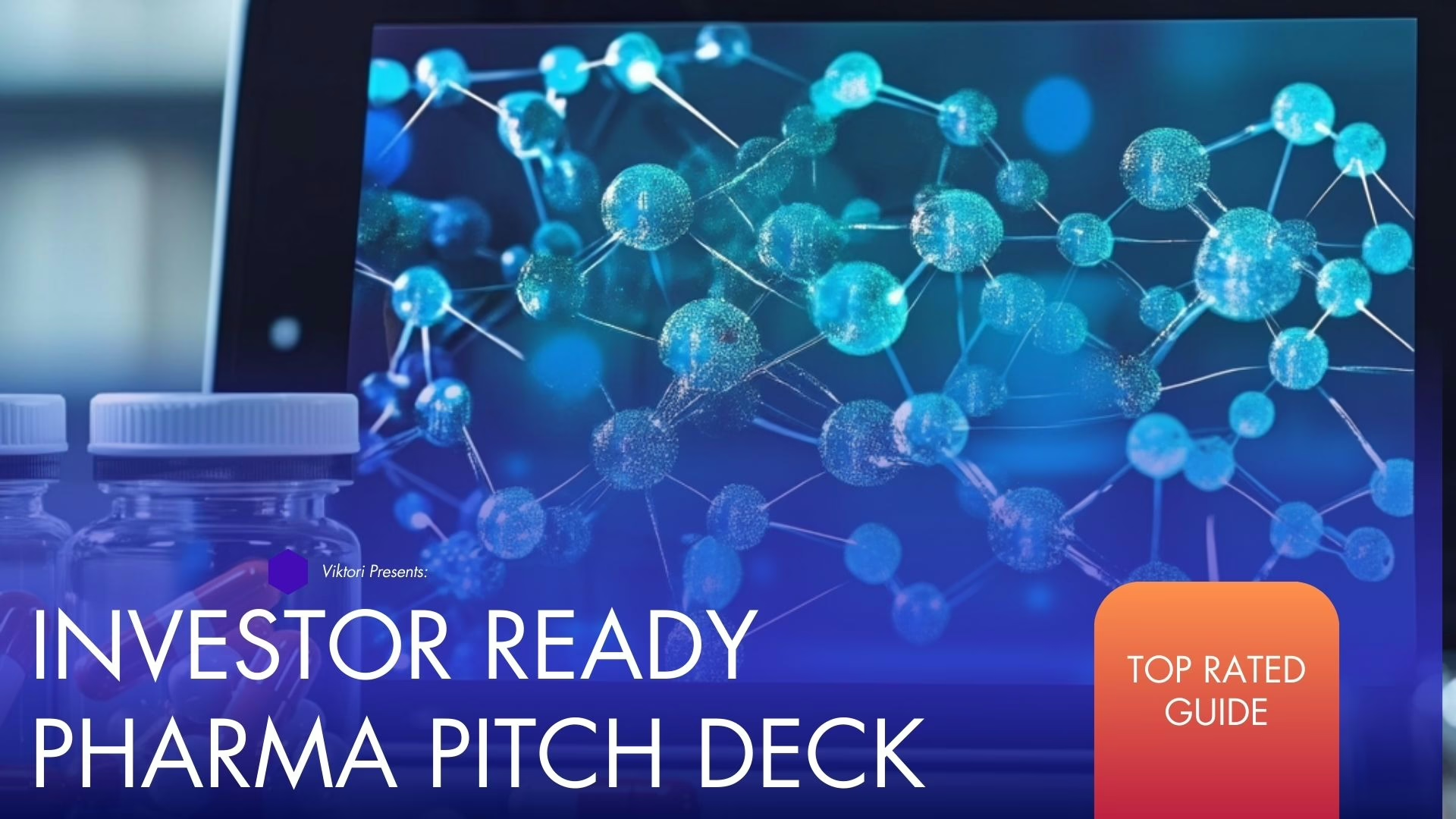
Investor Ready Pharma Pitch Deck | Template, Guide, Examples

11 Slide Non-Invasive Brain-Computer Interface Pitch Deck | Google Slides

10 Slide Clinical Trials Automation Pitch Deck Template | Google Slides

35 Best Healthcare Pitch Deck Examples from Successful Startups

12 Slide Male Infertility Solutions Pitch Deck Template | Google Slides
